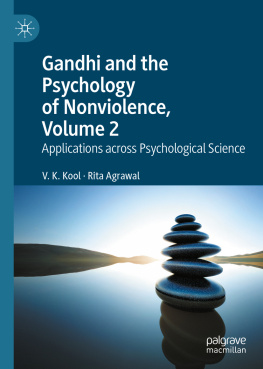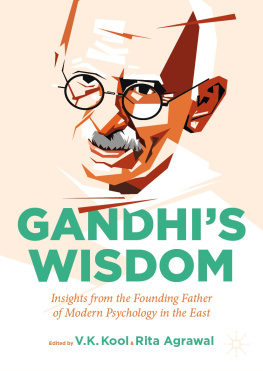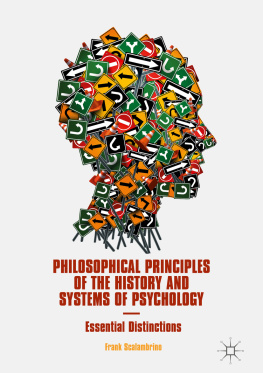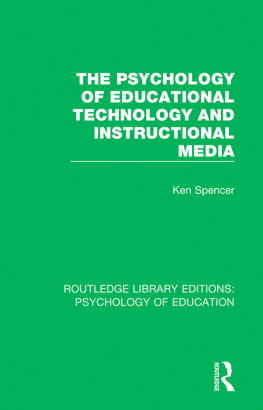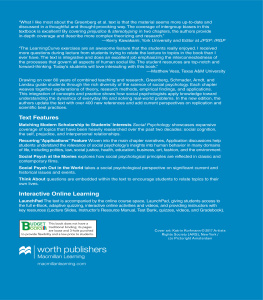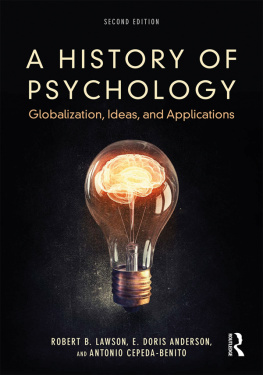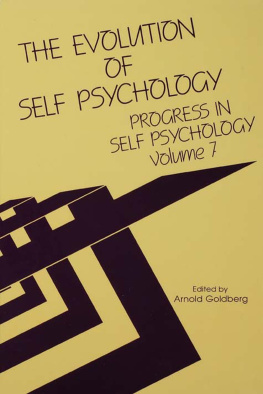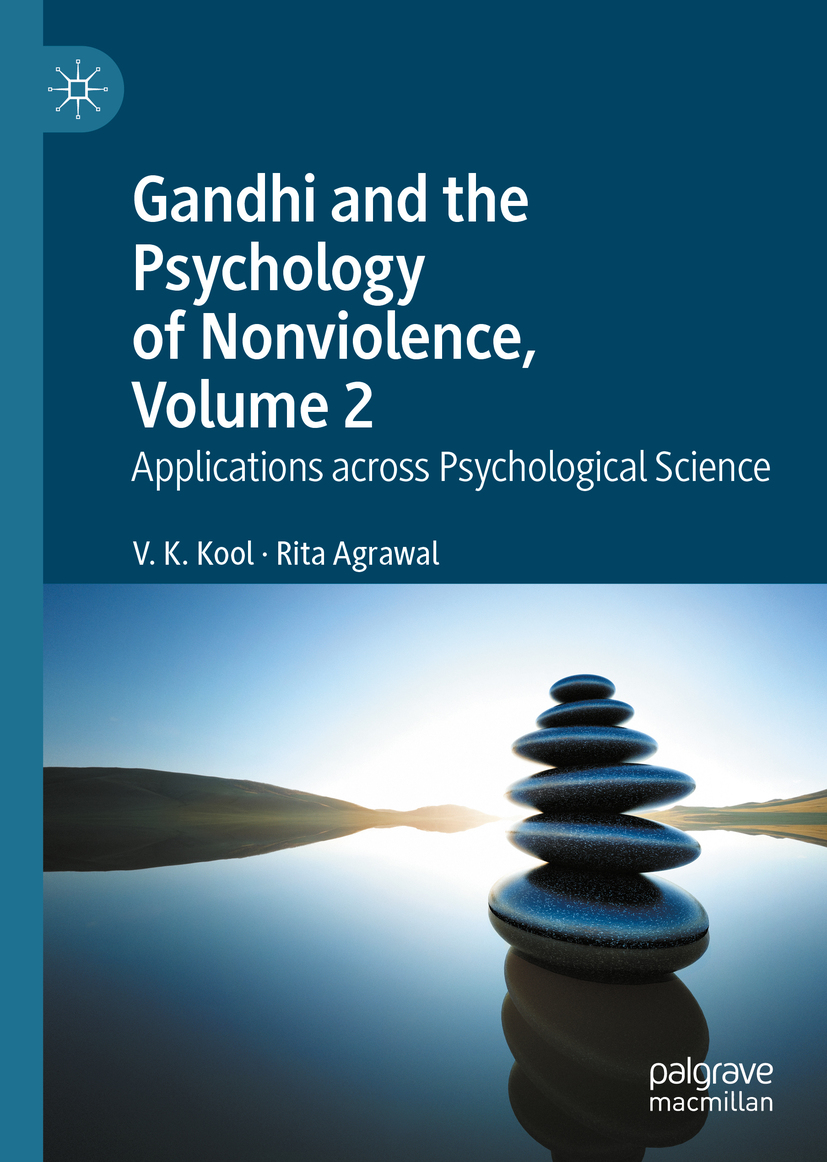V. K. Kool and Rita Agrawal
Gandhi and the Psychology of Nonviolence, Volume 2
Applications across Psychological Science
1st ed. 2020
V. K. Kool
SUNY Polytechnic Institute, Utica, NY, USA
Rita Agrawal
Harish Chandra Postgraduate College, Varanasi, Uttar Pradesh, India
ISBN 978-3-030-56988-4 e-ISBN 978-3-030-56989-1
https://doi.org/10.1007/978-3-030-56989-1
The Editor(s) (if applicable) and The Author(s), under exclusive license to Springer Nature Switzerland AG 2020
This work is subject to copyright. All rights are solely and exclusively licensed by the Publisher, whether the whole or part of the material is concerned, specifically the rights of translation, reprinting, reuse of illustrations, recitation, broadcasting, reproduction on microfilms or in any other physical way, and transmission or information storage and retrieval, electronic adaptation, computer software, or by similar or dissimilar methodology now known or hereafter developed.
The use of general descriptive names, registered names, trademarks, service marks, etc. in this publication does not imply, even in the absence of a specific statement, that such names are exempt from the relevant protective laws and regulations and therefore free for general use.
The publisher, the authors and the editors are safe to assume that the advice and information in this book are believed to be true and accurate at the date of publication. Neither the publisher nor the authors or the editors give a warranty, expressed or implied, with respect to the material contained herein or for any errors or omissions that may have been made. The publisher remains neutral with regard to jurisdictional claims in published maps and institutional affiliations.
Cover illustration: Doug Armand / Stone / Getty Images
This Palgrave Macmillan imprint is published by the registered company Springer Nature Switzerland AG.
The registered company address is: Gewerbestrasse 11, 6330 Cham, Switzerland
Vinod Kool has once again provided us with groundbreaking new understandings of sides of nonviolence in the Gandhian tradition few have paid attention to. These two volumes cover an impressive wide range of topics and each of them combines thorough studies of the sources with recent scientific discoveries in psychology and medicine.
Both volumes of Gandhi and the Psychology of Nonviolence must be obligatory reading for anyone who wants to understand how the Gandhian experiments with Truth have developed into the most important force in societal conflicts globally. All engaged citizens, activists, politicians, researchers, and students should include these books in their curriculum.
Kool and Agrawal provide food for thought on most of the important questions humanity is facing today including the 2020 pandemic.Reserve space in your book shelves for these books. When you have read them you will achieve a more nuanced view on Gandhi and nonviolence than you can imagine.
Jrgen Johansen, Deputy Editor, Journal of Resistance Studies, Sweden
Those of us in peace psychology take pride in how much our field covers almost all other approaches in psychology. In these two volumes, this is done with a focus on Gandhian psychology. The wide range and depth of coverage offers a must read for everyone who wants to be familiar with Gandhi or who wants to be well-versed in peace psychology.
Rachel MacNair, Director of the Institute for Integrated Social Analysis for Consistent Life, USA, President of the American Psychological Associations Division of Peace Psychology (2013), and author of Religions and Nonviolence: The Rise of Effective Advocacy for Peace (2015)
Prologue to Volume 2
One of the most difficult challenges a professor faces is when a student in the West is to be taught a concept rooted in the Eastern philosophy or vice versa. Gandhi employed several concepts such as aparigraha , anasakti, tapas and many more derived from the Indian religions and philosophies that are not easy to grasp by students and public at large in the West and elsewhere. But come to think of it, Gandhi and his principles and the concepts that he used are not really difficult to understand.
Let us start our explanations by imagining what would have taken place if Gandhi had been a subject for Milgrams obedience to authority experiment reported in almost every book of psychology. What Gandhi would have done, how would he have behaved, were he to participate as a subject in the experiment inviting him to deliver lethal shocks to an erring learner? For one thing, Gandhi would seldom refuse if a person approached him for help. So, would he have gone along with the instructions to help the experimenter? Certainly not! Instead of obeying Milgrams instructions to deliver shocks, Gandhi would have asked if there was any other way in which he could help Milgram so as to serve the purpose of the experiment. No civilized person would start giving shocks simply because he had been told to do so. Using his wisdom and following the Socratic dictum of challenging oneself with questions before embarking on a journey in unfamiliar terrain, Gandhi would have given Milgram an analogy of the windows in the homes of the Netherlands, the majority of which are generally not draped with curtains or blinds. Well, the Dutch believe that they have nothing to hide and even as darkness sets in the late evening and the inside of their Dutch homes are visible from the outside, the residents do not cover their windows for privacy. This attitude is, in many ways, akin to the Protestant religious tradition of Calvinism which stipulates that there is nothing to hide: we are the same, both from the inside and from the outside. Since psychologists, often, do not tell subjects the real purpose of the experiment until the debriefing session is conducted after the experiment is over, Gandhi would not have been a willing and cooperative subject in a psychology experiment, let alone the famous Milgram experiment. What is the reason for such an attitude? The reason is that for Gandhi, any achievement of goals is contingent upon the fairness of the means; otherwise, no matter how great the success, in the absence of pious means, it is harmful and carries a poor message for humanity. Gandhi would have told the Yale professor Milgram to learn from the Dutch.
As stated in the Preface of Volume 1 of this book, people do not become saints overnight. It is only through their struggles, both within and without, that they learn, they grow and they evolve. The same was the case with Gandhi, and one of the important objectives of this book was to delve into the experiences that made him a Mahatma (saint) for the great Indian poet Rabindranath Tagore and Bapu (father) for the teeming masses that followed him, through thick and thin. Another objective of this book was an analysis of Gandhis creed of nonviolence and to study it in the context of twenty-first-century empirical research and theory in psychology. Further, we felt a need to establish the idea that Gandhis ahimsa or nonviolence was not only in a class of its own, but that it was based on sound principles derived from the multifarious experiments Gandhi conducted on himself and Truth . In sum, the majority of books of psychology, including those on social psychology, reveal that the brunt of the focus has been on people characterized by aggression and even violence, with those who choose nonviolence as their characteristic mode of reaction receiving negligible attention. In contrast, the present book, offered in two volumes, was written with the aim of highlighting the psychology of nonviolence, with specific reference to Gandhi. While the significance of concepts such as self-control and moral inclusion have been noted relatively recently in the field of psychology, Gandhi had long put them in the backyard of psychology, on the basis of his social experiments. There is much to learn from his life and philosophy, which can be used to enrich the content of modern psychology in general and well-being in particular.

